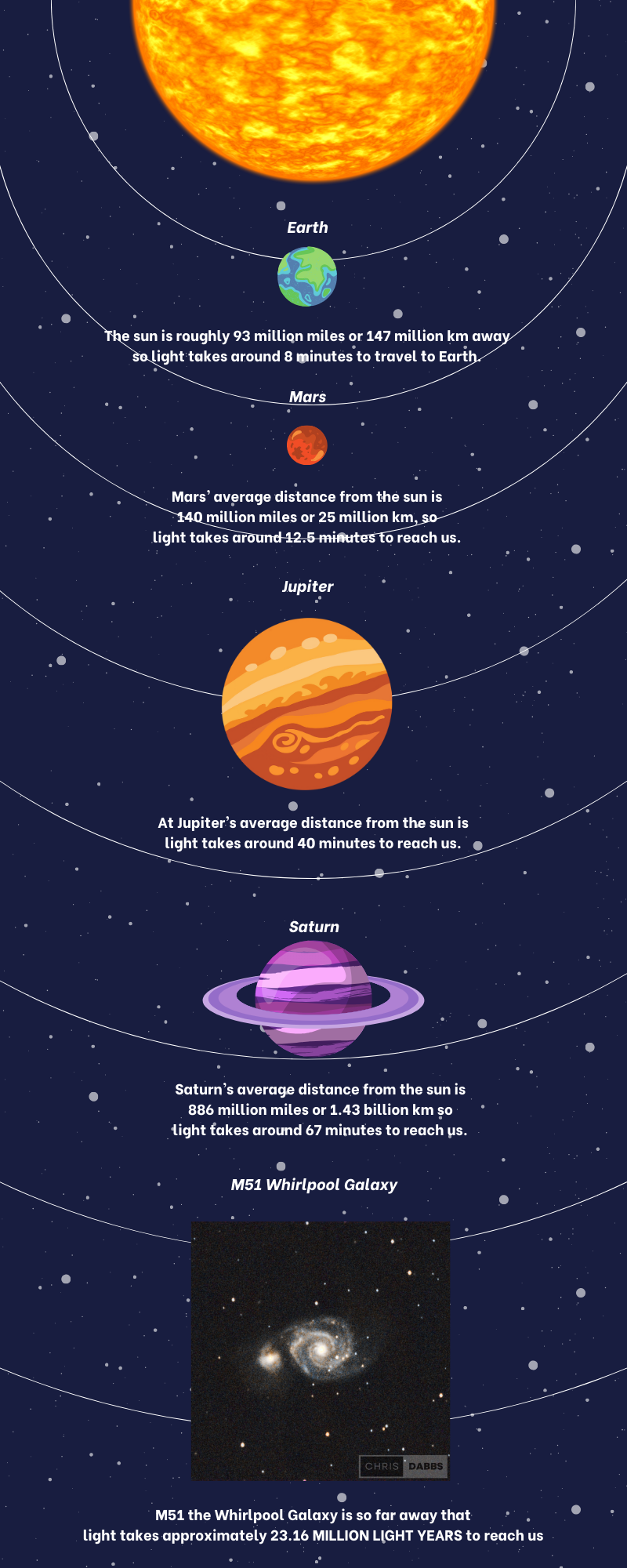
Welcome starry-eyed friends to our cosmic journey at the speed of light! Did you know light zips through space at about 299,792 kilometres per second? That’s seriously fast—so fast, in fact, that talking in kilometres just doesn’t do it justice. Instead, we use the term "light-year" to measure vast interstellar distances.
Now, imagine flipping on a spotlight aimed at Earth.
Taking off from the Sun, light only takes around 8 minutes and 20 seconds to hit Earth—enough time to microwave popcorn!
Bouncing over from our silvery Moon is a quick trip, taking just about 1.3 seconds. Talk about a moonbeam express!
What if we cast the net wider?
Light from Mars races to Earth in about 3 to 22 minutes, depending on our positions in orbit—so it’s not exactly a next-door neighbour.
Jupiter shines its light upon us after a journey of 43 minutes to over an hour, and Saturn’s glow takes a leisurely 1.2 to 1.5 hours to reach us.
Now, let’s talk stars. Our nearest galactic neighbour is Proxima Centauri, sitting about 4.24 light-years away. That’s about 4 years of light-speed travel!
And how about hopping galaxies? The Andromeda Galaxy, our celestial cousin, is a staggering 2.5 million light-years away.
If you sent a postcard at the speed of light, well, let's just say it's not the best way to keep in touch with intergalactic friends.

